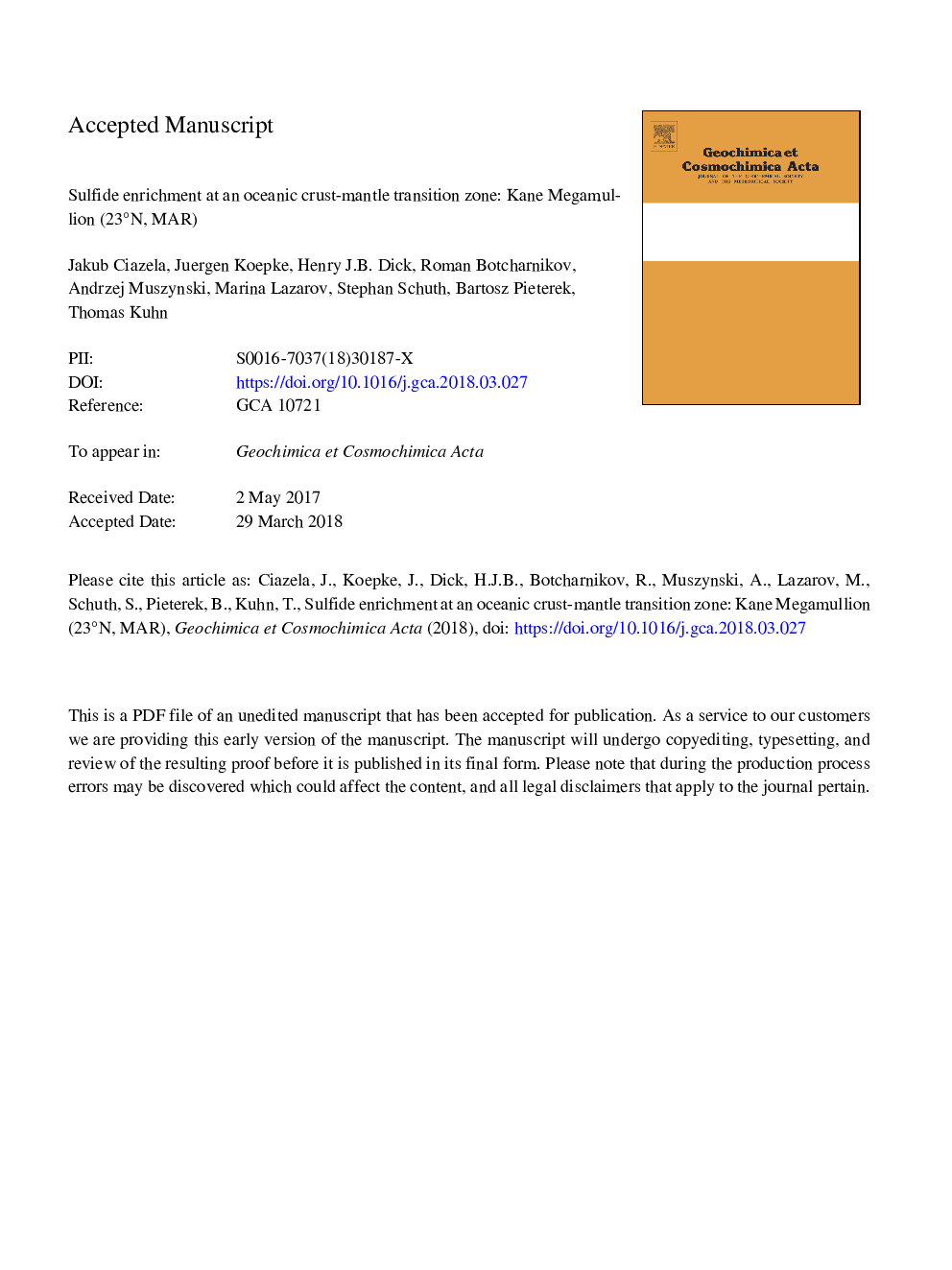| Article ID | Journal | Published Year | Pages | File Type |
|---|---|---|---|---|
| 8910765 | Geochimica et Cosmochimica Acta | 2018 | 77 Pages |
Abstract
The Kane Megamullion oceanic core complex located along the Mid-Atlantic Ridge (23°30â²N, 45°20â²W) exposes lower crust and upper mantle directly on the ocean floor. We studied chalcophile elements and sulfides in the ultramafic and mafic rocks of the crust-mantle transition and the mantle underneath. We determined mineralogical and elemental composition and the Cu isotope composition of the respective sulfides along with the mineralogical and elemental composition of the respective serpentines. The rocks of the crust-mantle transition zone (i.e., plagioclase harzburgite, peridotite-gabbro contacts, and dunite) overlaid by troctolites are by one order of magnitude enriched in several chalcophile elements with respect to the spinel harzburgites of the mantle beneath. Whereas the range of Cu concentrations in spinel harzburgites is 7-69â¯ppm, the Cu concentrations are highly elevated in plagioclase harzburgites with a range of 90-209â¯ppm. The zones of the peridotite-gabbro contacts are even more enriched, exhibiting up to 305â¯ppm Cu and highly elevated concentrations of As, Zn, Ga, Sb and Tl. High Cu concentrations show pronounced correlation with bulk S concentrations at the crust-mantle transition zone implying an enrichment process in this horizon of the oceanic lithosphere. We interpret this enrichment as related to melt-mantle reaction, which is extensive in crust-mantle transition zones. In spite of the ubiquitous serpentinization of primary rocks, we found magmatic chalcopyrites [CuFeS2] as inclusions in plagioclase as well as associated with pentlandite [(Fe,Ni)9S8] and pyrrhotite [Fe1âxS] in polysulfide grains. These chalcopyrites show a primary magmatic δ65Cu signature ranging from â0.04 to +0.29 â°. Other chalcopyrites have been dissolved during serpentinization. Due to the low temperature (<300â¯Â°C) of circulating fluids chalcophile metals from primary sulfides have not been mobilized and transported away but have been trapped in smaller secondary sulfides and hydroxides. Combined with the Cu deposits documented in the crust-mantle transition zones of various ophiolite complexes, our results indicate that the metal enrichment, increased sulfide modes, and potentially formation of small sulfide deposits could be expected globally along the petrological Moho.
Related Topics
Physical Sciences and Engineering
Earth and Planetary Sciences
Geochemistry and Petrology
Authors
Jakub Ciazela, Juergen Koepke, Henry J.B. Dick, Roman Botcharnikov, Andrzej Muszynski, Marina Lazarov, Stephan Schuth, Bartosz Pieterek, Thomas Kuhn,
